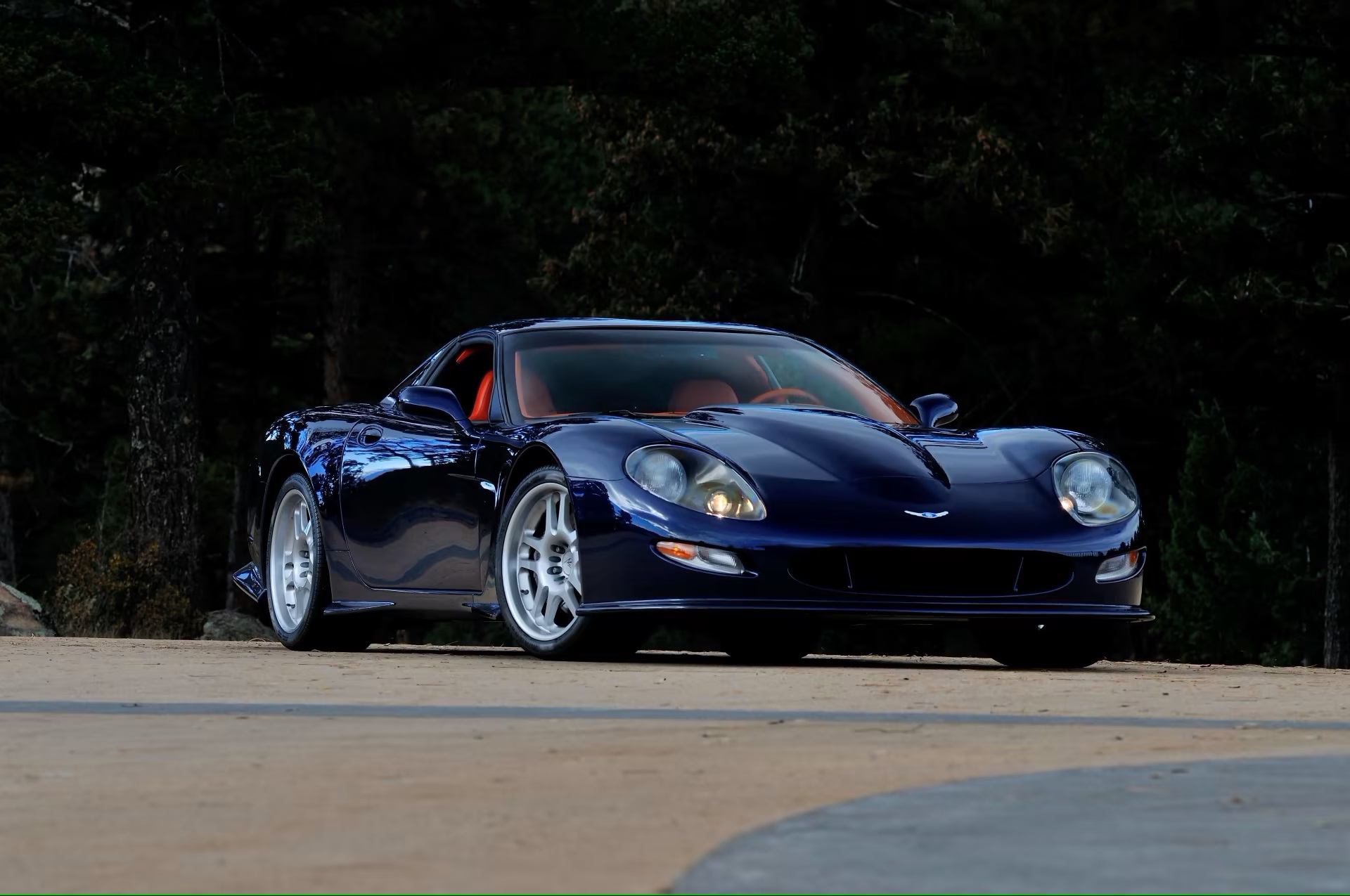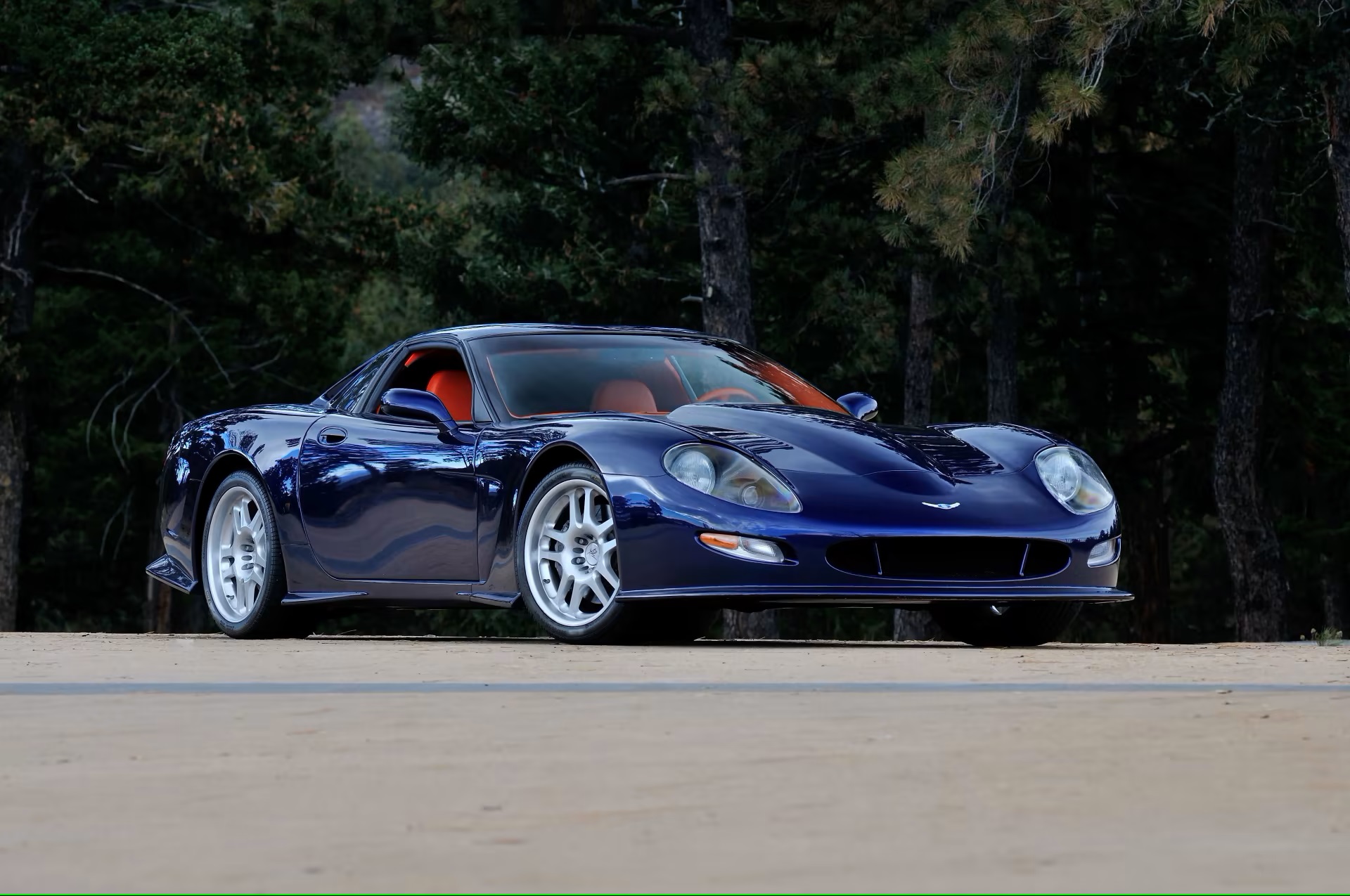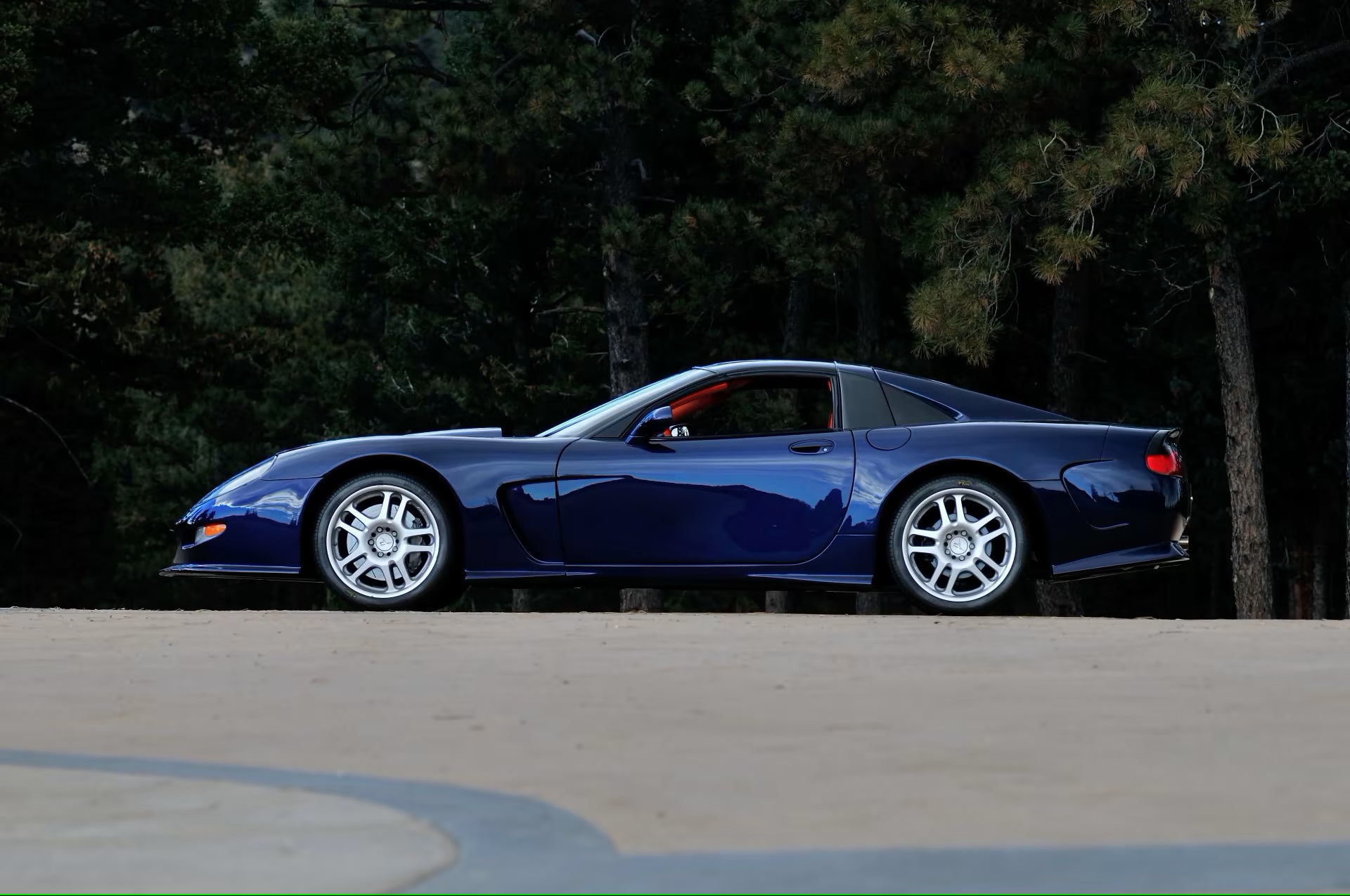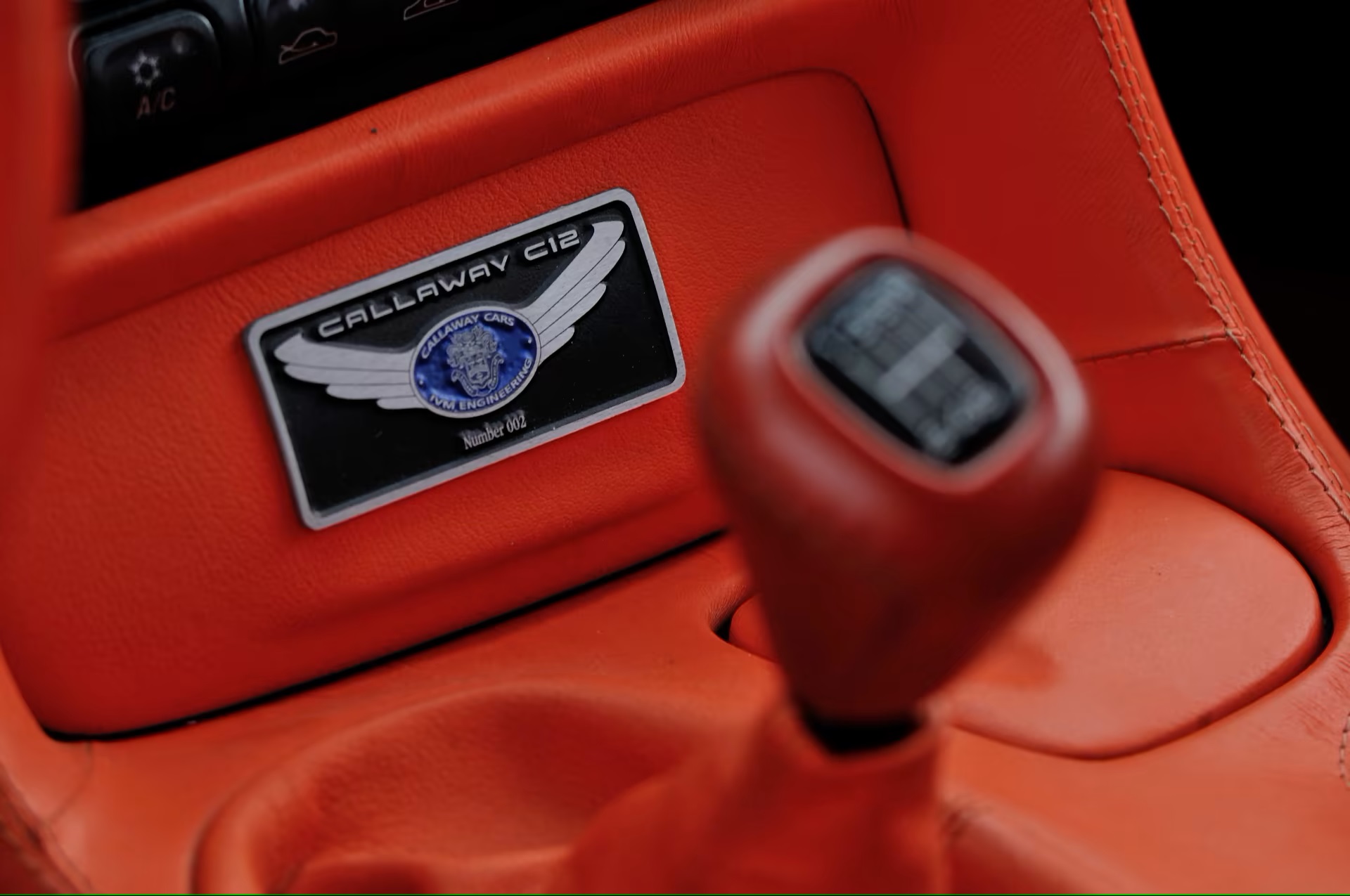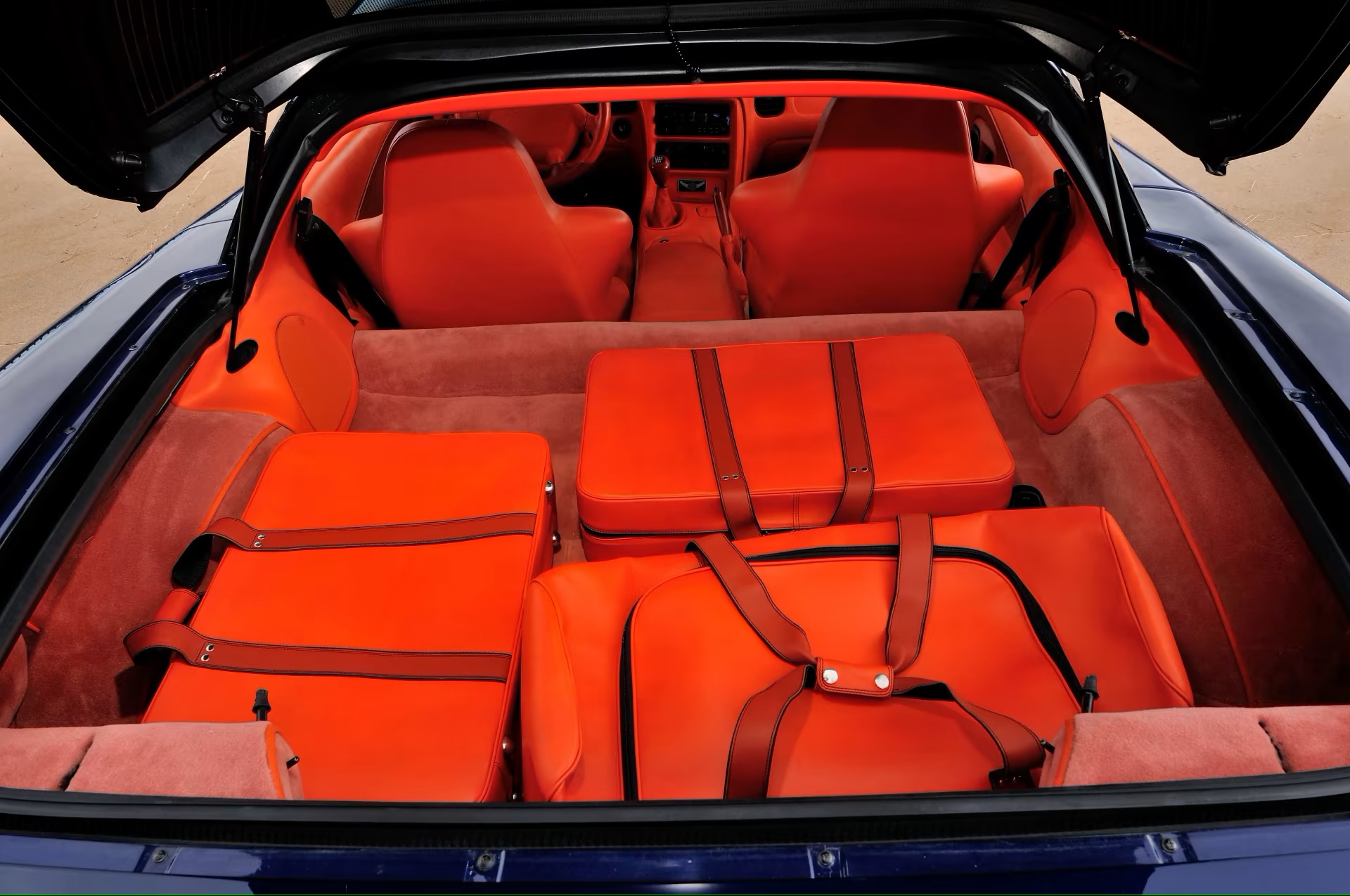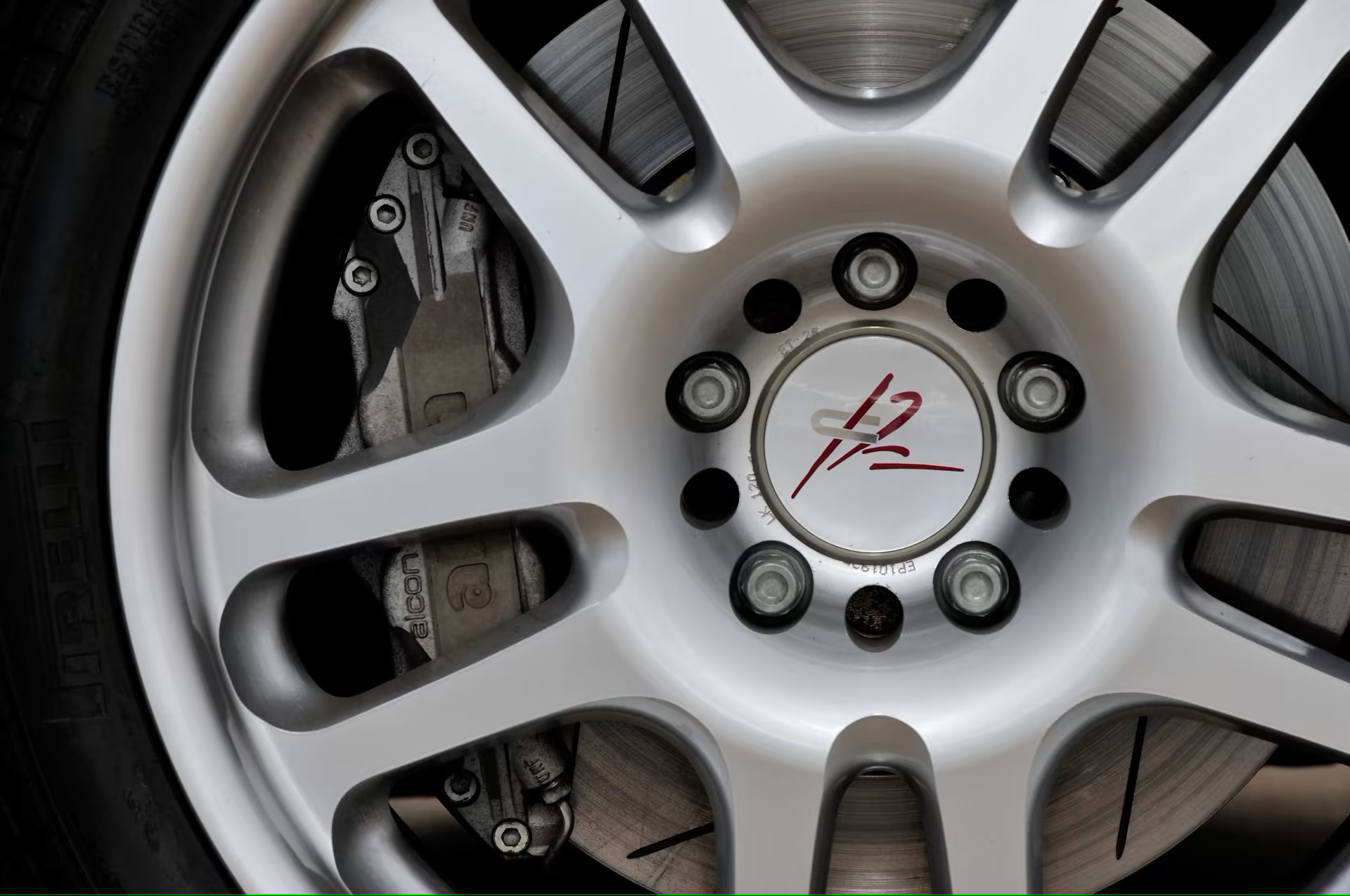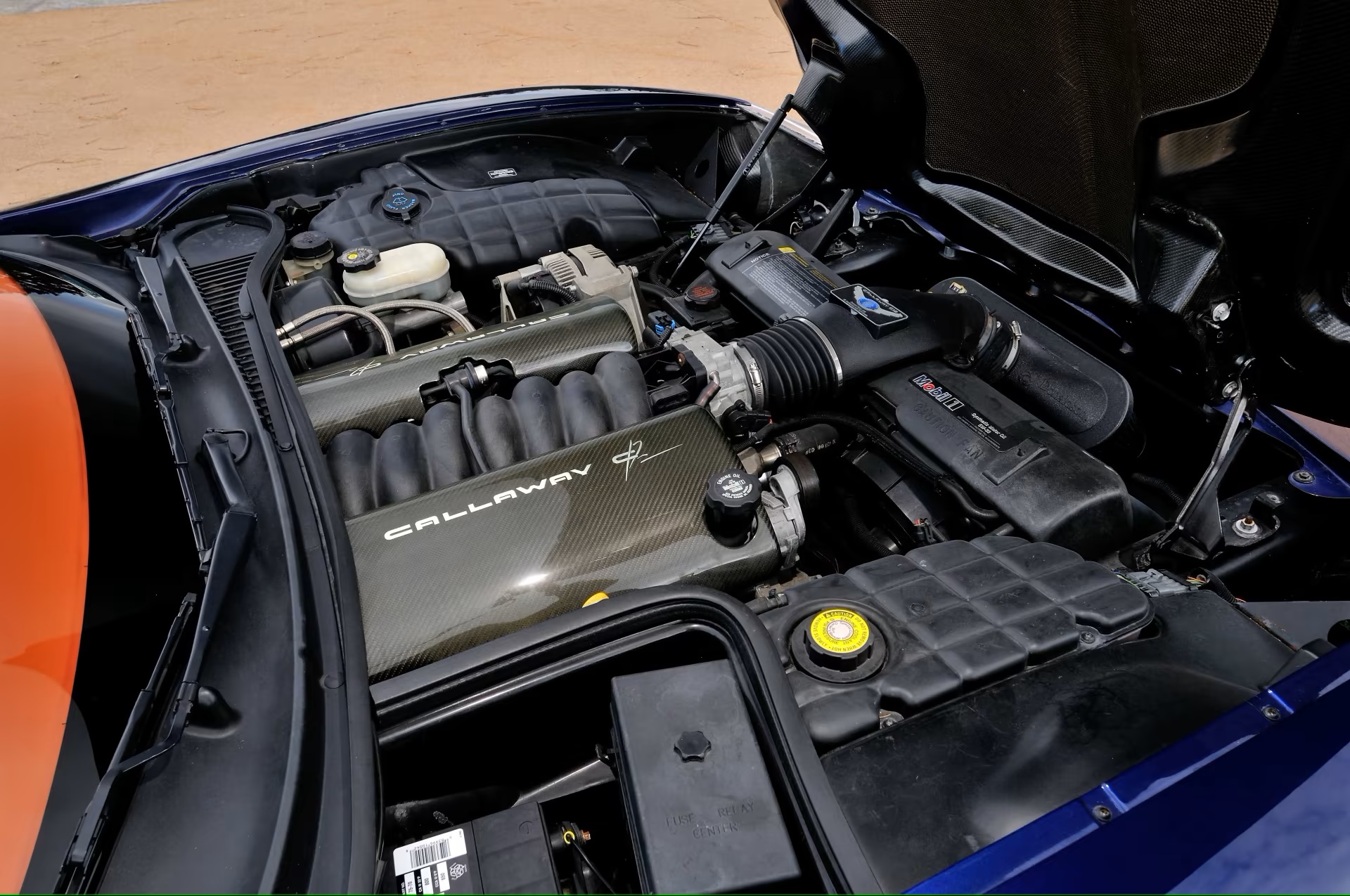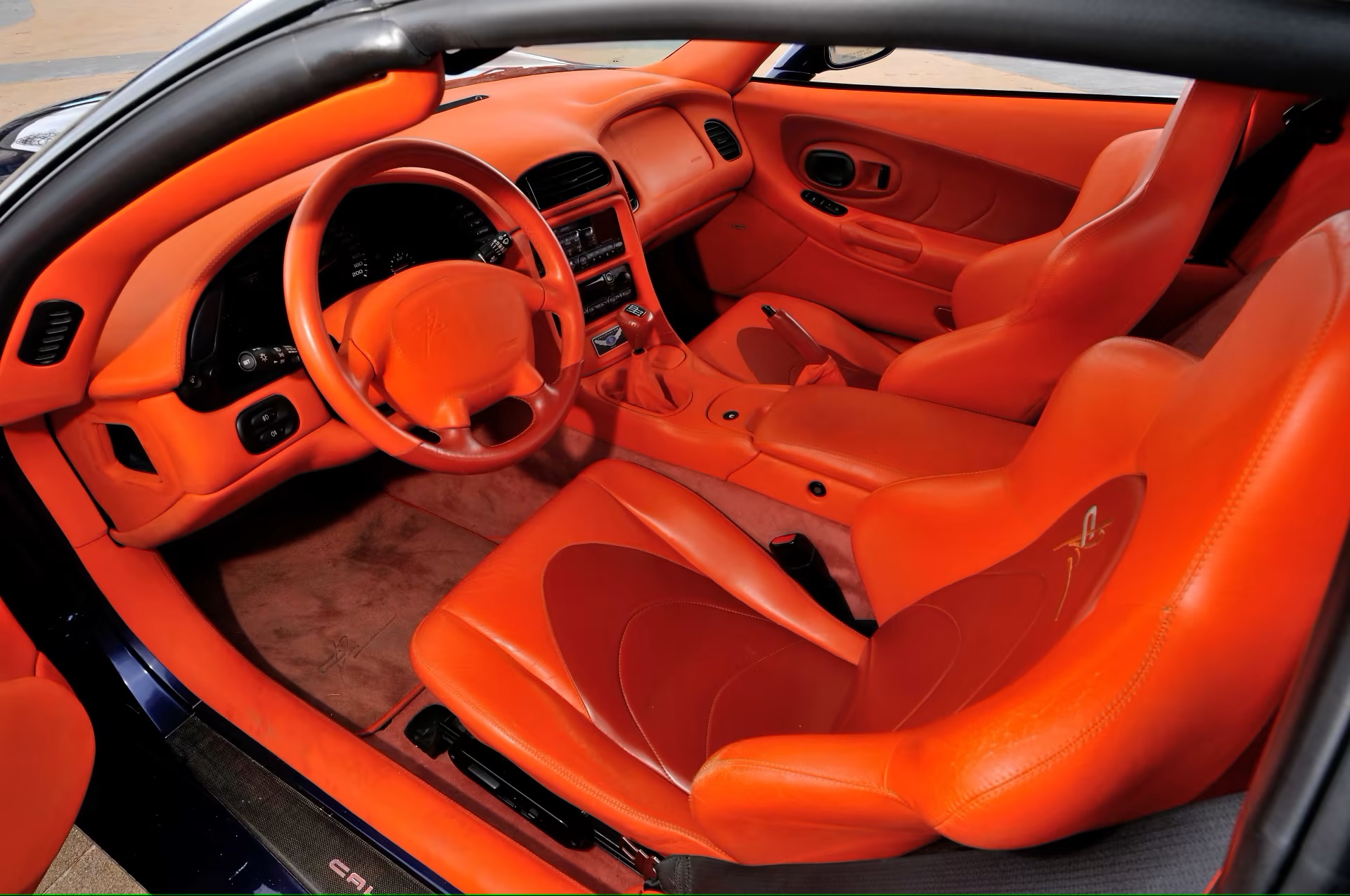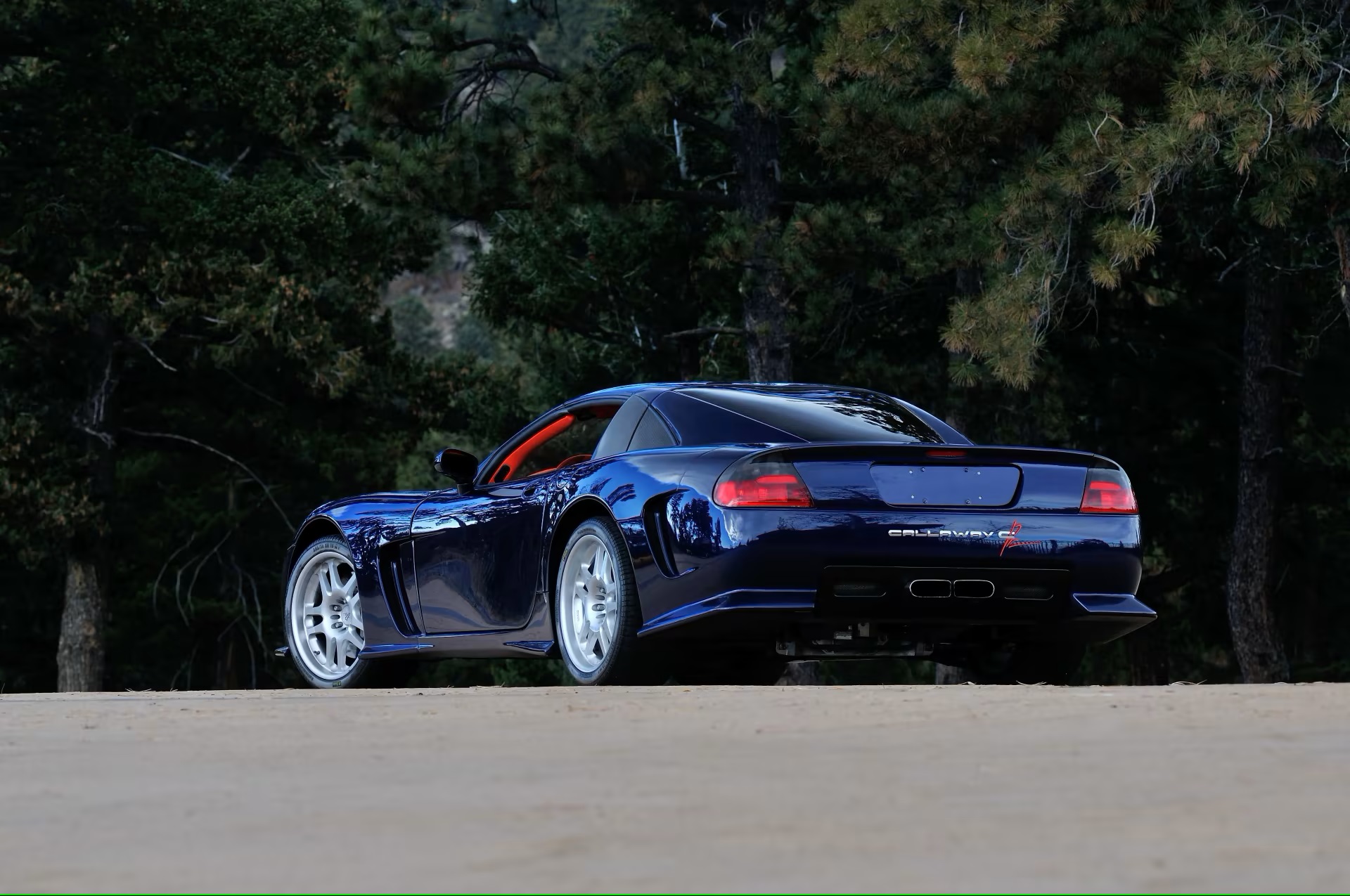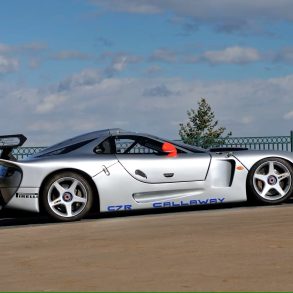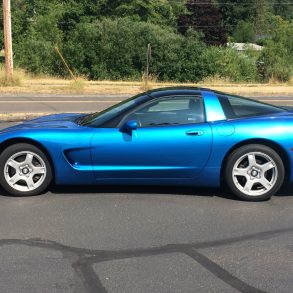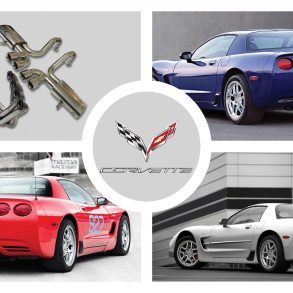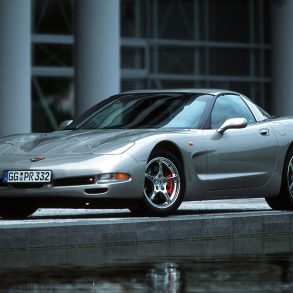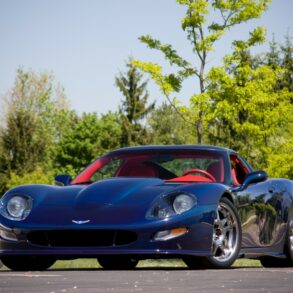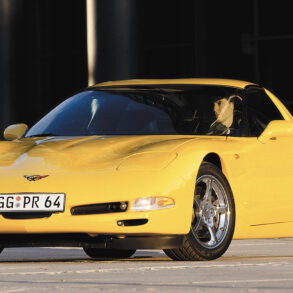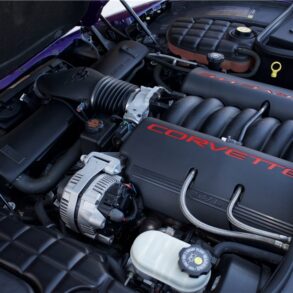When Chevrolet introduced the fifth-generation Corvette in 1997, Callaway immediately began development of a platform that would compliment and enhance the all-new C5 model. Reeves Callaway, owner and founder of Callaway Cars, wanted to build a car that could also compete in the GT2 Class of the 24 Hours of Le Mans. The result was the Callaway C12.
Derived from the C5 Corvette, the C12 incorporated advanced German engineering courtesy of Munich-based IVM Engineering. They devised an entirely novel independent suspension system for the C12, broadening it to 65 inches and outfitting it with adjustable coilover shock absorbers, ventilated disc brakes featuring ABS, and 19×10.5-inch alloy wheels enveloped in Pirelli P-Zero tires.
The second aspect of the transformation centered around the car’s sleek carbon fiber and Kevlar body, characterized by a flowing design that anticipated its future performance on the track. This design featured a spacious rear deck tailored to accommodate a full-width spoiler and a generously sized lower rear valence designed to optimize underbody aerodynamics.
Beneath its hood, the C12 came equipped with a tuned/modified version of Chevy’s 5.7 Liter LS1 engine (the same engine (though heavily modified) that came standard in the C5 Corvette coupe and convertible models.) Known as the Callaway SuperNatural, the modified LS1 engine was capable of producing 440 horsepower at 6,300 rpms (a significant bump-up in power over the 345 hp produced by the stock engine in the base model Corvette.) The engine’s torque also increased from 350 lbs./ft. at 4,400 rpm to 395 lbs/ft at 5,200 rpm.
Photo Source: Mecum Auctions


